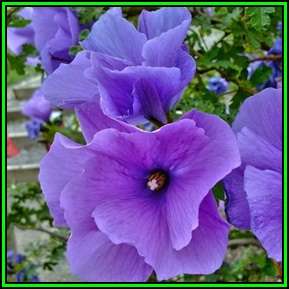
Lilac Hibiscus - Alyogyne huegelii - 10 Seed Pack - Exotic Perennial Flowering Shrub - New
Check my rate
| Main centres: | 1-3 business days |
| Regional areas: | 3-4 business days |
| Remote areas: | 3-5 business days |

| Main centres: | 1-3 business days |
| Regional areas: | 3-4 business days |
| Remote areas: | 3-5 business days |
Alyogyne is a genus of flowering plants in the family Malvaceae which are native to Australia. Its species were formerly in the genus Hibiscus but were split off starting in 1863 with H. hakaeifolius. In 1915 Lewton transferred H. cuneiformis and in Fryxell (1968) H. pinonianus and H. huegelii followed. A recent revision has created many new species. The name Alyogyne comes from the Greek words "alytos" (undivided) and "gyne" (female). "Gyne" referrers to the styles which are female parts of a flower. In Hibiscus, the style is branched below the stigmas but in Alyogyne it is undivided.
The flowers have five luminous petals up to 70 mm long, these are overlapping and have slight ridges. The colour is cream or mauve, or the lilac of the name by which it is traded. The staminal tube structure contains numerous whorled anthers, these are yellow. The five styles of this are fused until the tip, which is composed of swollen and apparently divided stigma. This is supported on a five-lobed calyx, within an arrangement of up to 10 partly fused bracts. As with all the Malvales, the flowers last around a day – becoming deeply coloured and papery when spent. They are numerous in the long flowering period between June and January.
|